
cellular structures, micro-organisms and diseases
Anton Van Leeuwenhoek was a Dutch scientist, he was the first microbiologist and he was the inventor of the microscope.
Robert Hooke was the first person to see a cell.
Matthias Scheiden was a German botanist and he concluded that all plants have cells.
Theodore Schwann observed that animals were also composed of cells.
The 3 main ideas of the cell theory are:
→ All living things are composed of one or more cells.
→ The cell is the basic unit of organisation of organisms
→ All cells come from pre - existing cells.
Eukaryotic cells consist of Protista, Plants, Fungi and Animal cells.
Plant vs. Animal eukaryotic cells
ANIMAL - cell membrane only, small vacuoles, and no chloroplasts.
PLANT - cell wall for structure and cell membrane, larger vacuoles, and chloroplasts.
Prokaryotic cells consist of Bacteria and Archaebacteria.
Prokaryotic vs. Eukaryotic cells
PROKARYOTIC - small cells, no organelles except ribosomes, NO nucleus, simple, mostly unicellular, cell division by binary fission. E.g. bacteria
EUKARYOTIC - large cells, contains organelles, nucleus, complex, mostly multicellular, cell division by mitosis/meiosis. E.g. plants, fungi, and animals.
Golgi Complex - packaging of proteins for export from cells.
Nucleus - control centre of the cell.
Vacuole - storage facility for fluid, enzymes, and nutrients.
Mitochondria - production of ATP (power plant, breaks down sugar and releases energy).
Chloroplast - photosynthesis.
Cell Wall - structural support in plants, and bacteria.
Cytosol - fluid that’s part of the cell.
Ribosomes - synthesis of proteins.
Lysosomes - contains enzymes responsible for breakdown of debris.
Plasma Membrane - controls what enters and leaves a cell.
Smooth ER - synthesis of lipids and steroid hormones.
Rough ER - transport of proteins within cell.
Lysosomes - uses chemicals to breakdown food and worn out cell parts.
Cytoskeleton - cell made up of microfilaments that provides structure throughout the cytoplasm.
Direct contact
Person - to - person transmission:
infected person touches or exchanges bodily fluids with someone else.
can happen before an infected person is aware of the illness.
E.g. sexually transmitted infections (STI’s)
Droplet transmission:
spray of droplets during coughing and sneezing can spread an infectious disease.
can infect another person through droplets created when you speak.
InDirect contact
Airborne transmission:
some pathogens can travel long distanced and remain in the air for long periods of time.
can catch some diseases by walking in a room after someone infected with the disease has left.
E.g. measles.
Contaminated objects:
some pathogens can survive on objects or surfaces.
if you touch a contaminated object (E.g. doorknob) soon after an infected person you might be exposed to the disease.
transmission occurs when you touch your mouth, nose, or eyes before thoroughly washing your hands.
Contaminated food & drinking water:
infectious disease can be transmitted via contaminated food or water
E.g. E. coli in undercooked meat, Clostridium botulinum in improperly canned food and Cholera in water.
Animal - to - person transmission:
some disease can be transmitted from an animal to a person.
occurs when an infected animal bites or scratches you or when you handle animal waste.
E.g. Toxoplasma gondii parasite in cat faeces.
Animal reservoirs:
animal - to animal disease transmision can sometimes transfer to humans.
zoonotic occurs when disease are transferred from animals to people.
Zoonotic disease include:
→ Anthrax (sheep)
→ Rabies (dogs)
→ West Nile virus (birds)
→ Plague (rodents)
Insect bites (vector - borne disease):
some zoonotic pathogens are transmitted by insects, especially those that suck blood.
these include mosquitoes, fleas and ticks.
insects become infected when they feed on infected host. E.g. birds, animals and humans.
disease is then transmitted when insects bites a new host.
E.g. malaria (mosquitoes) and Lyme disease (ticks).
Environmental reservoirs:
soil, water and vegetation can contain pathogens that can be transferred to humans.
E.g. legionnaires’ disease can be spread by water that supplies air conditioners.
Bacteria
What are bacteria?
→ Prokaryotes
→ Unicellular organisms
→ Very small
→ No membrane bound organelles, no nucleus
→ Can be found on most materials and surfaces - billions in and on your body
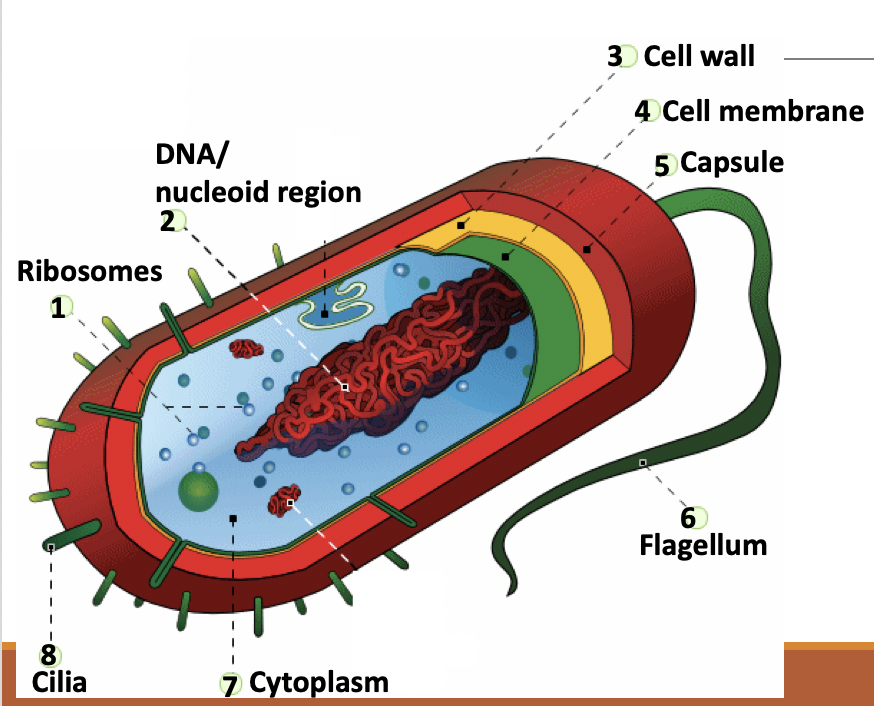 Gram positive bacteria have a thick peptide and appear purple when viewed under a microscope.
Gram positive bacteria have a thick peptide and appear purple when viewed under a microscope.
Gram negative bacteria have a thin peptide and appear pink viewed under a microscope
Bacteria replicate through binary fission
Viruses
What are viruses?
→ Non-cellular pathogens
→ Scientists debate whether viruses should be called living things as they are obligate intracellular parasites. this means that for them to be able to function/reproduce they need to be inside a cell.
→ Comprised of two parts: Nucleic acid (DNA or RNA), Protein coat (capsid).
How do viruses reproduce?

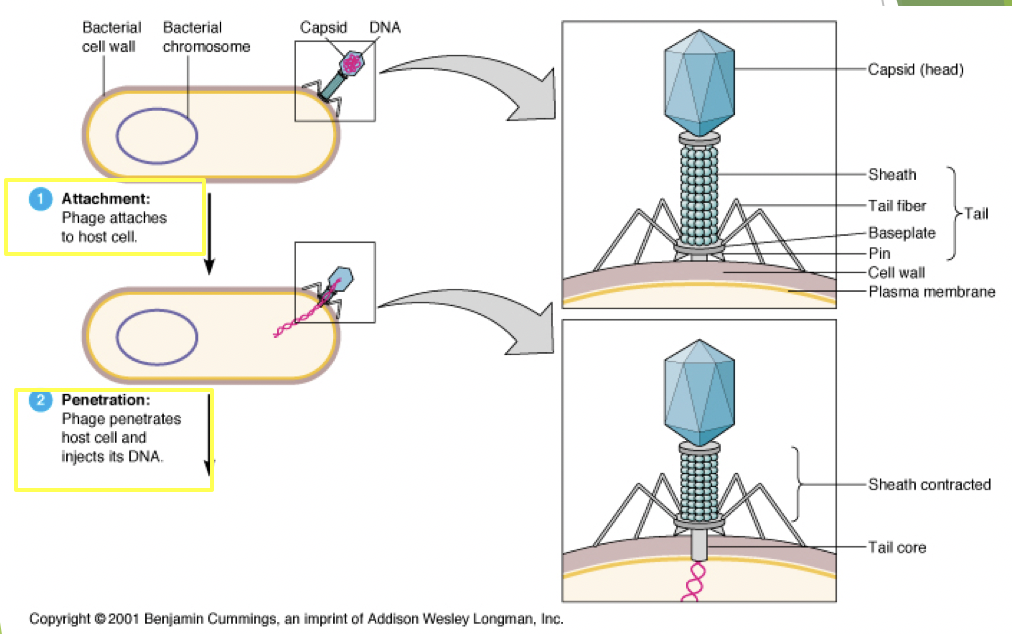 Prions
Prions
Name comes from protein and infection 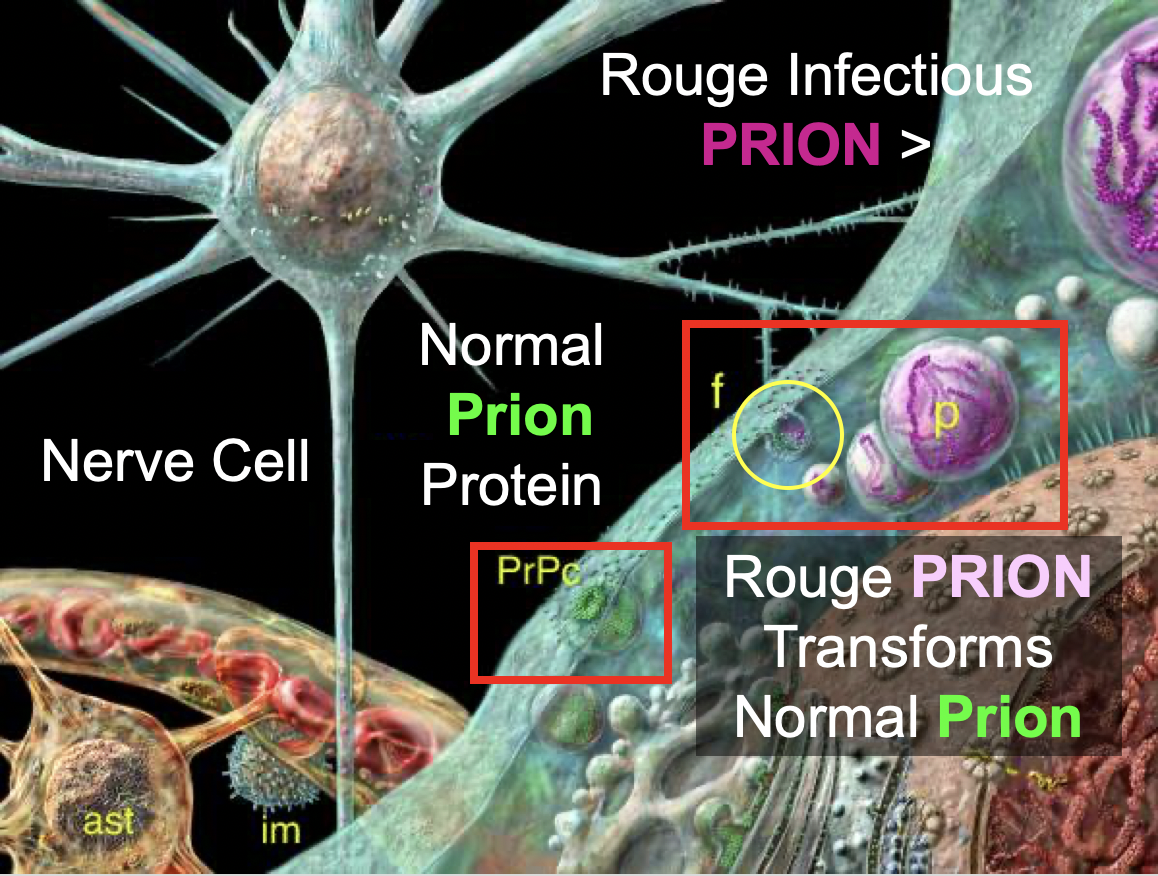
Fungi and worms
The fungi kingdom
→ Fungi are eukaryotic
→ they are heterotrophs
→ they are multicellular
→ they cannot move on their own and so reproduced by dispersing
Worms - characteristics
→ parasites: an organism that lives in or on another organism (its host) and benefits by deriving nutrients at the hosts expense.
→ Endoparasites: a parasite that lives inside the host. E.g. tapeworm.
→ Ectoparasites: a parasite that lives outside the host. E.g. flea.
Protozoa
Protozoa characteristics:
→ unicellular
→ they are heterotrophic
→ contain organelles and some that are unique; Contractile vacuole, pellicle, gullet.
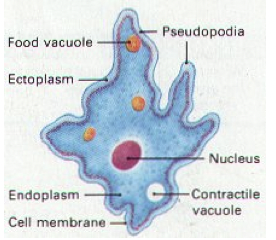
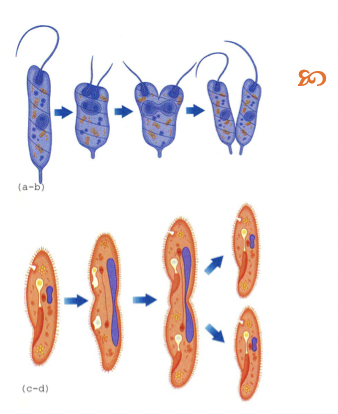
Anton Van Leeuwenhoek was a Dutch scientist, he was the first microbiologist and he was the inventor of the microscope.
Robert Hooke was the first person to see a cell.
Matthias Scheiden was a German botanist and he concluded that all plants have cells.
Theodore Schwann observed that animals were also composed of cells.
The 3 main ideas of the cell theory are:
→ All living things are composed of one or more cells.
→ The cell is the basic unit of organisation of organisms
→ All cells come from pre - existing cells.
Eukaryotic cells consist of Protista, Plants, Fungi and Animal cells.
Plant vs. Animal eukaryotic cells
ANIMAL - cell membrane only, small vacuoles, and no chloroplasts.
PLANT - cell wall for structure and cell membrane, larger vacuoles, and chloroplasts.
Prokaryotic cells consist of Bacteria and Archaebacteria.
Prokaryotic vs. Eukaryotic cells
PROKARYOTIC - small cells, no organelles except ribosomes, NO nucleus, simple, mostly unicellular, cell division by binary fission. E.g. bacteria
EUKARYOTIC - large cells, contains organelles, nucleus, complex, mostly multicellular, cell division by mitosis/meiosis. E.g. plants, fungi, and animals.
Golgi Complex - packaging of proteins for export from cells.
Nucleus - control centre of the cell.
Vacuole - storage facility for fluid, enzymes, and nutrients.
Mitochondria - production of ATP (power plant, breaks down sugar and releases energy).
Chloroplast - photosynthesis.
Cell Wall - structural support in plants, and bacteria.
Cytosol - fluid that’s part of the cell.
Ribosomes - synthesis of proteins.
Lysosomes - contains enzymes responsible for breakdown of debris.
Plasma Membrane - controls what enters and leaves a cell.
Smooth ER - synthesis of lipids and steroid hormones.
Rough ER - transport of proteins within cell.
Lysosomes - uses chemicals to breakdown food and worn out cell parts.
Cytoskeleton - cell made up of microfilaments that provides structure throughout the cytoplasm.
Direct contact
Person - to - person transmission:
infected person touches or exchanges bodily fluids with someone else.
can happen before an infected person is aware of the illness.
E.g. sexually transmitted infections (STI’s)
Droplet transmission:
spray of droplets during coughing and sneezing can spread an infectious disease.
can infect another person through droplets created when you speak.
InDirect contact
Airborne transmission:
some pathogens can travel long distanced and remain in the air for long periods of time.
can catch some diseases by walking in a room after someone infected with the disease has left.
E.g. measles.
Contaminated objects:
some pathogens can survive on objects or surfaces.
if you touch a contaminated object (E.g. doorknob) soon after an infected person you might be exposed to the disease.
transmission occurs when you touch your mouth, nose, or eyes before thoroughly washing your hands.
Contaminated food & drinking water:
infectious disease can be transmitted via contaminated food or water
E.g. E. coli in undercooked meat, Clostridium botulinum in improperly canned food and Cholera in water.
Animal - to - person transmission:
some disease can be transmitted from an animal to a person.
occurs when an infected animal bites or scratches you or when you handle animal waste.
E.g. Toxoplasma gondii parasite in cat faeces.
Animal reservoirs:
animal - to animal disease transmision can sometimes transfer to humans.
zoonotic occurs when disease are transferred from animals to people.
Zoonotic disease include:
→ Anthrax (sheep)
→ Rabies (dogs)
→ West Nile virus (birds)
→ Plague (rodents)
Insect bites (vector - borne disease):
some zoonotic pathogens are transmitted by insects, especially those that suck blood.
these include mosquitoes, fleas and ticks.
insects become infected when they feed on infected host. E.g. birds, animals and humans.
disease is then transmitted when insects bites a new host.
E.g. malaria (mosquitoes) and Lyme disease (ticks).
Environmental reservoirs:
soil, water and vegetation can contain pathogens that can be transferred to humans.
E.g. legionnaires’ disease can be spread by water that supplies air conditioners.
Bacteria
What are bacteria?
→ Prokaryotes
→ Unicellular organisms
→ Very small
→ No membrane bound organelles, no nucleus
→ Can be found on most materials and surfaces - billions in and on your body
 Gram positive bacteria have a thick peptide and appear purple when viewed under a microscope.
Gram positive bacteria have a thick peptide and appear purple when viewed under a microscope.
Gram negative bacteria have a thin peptide and appear pink viewed under a microscope
Bacteria replicate through binary fission
Viruses
What are viruses?
→ Non-cellular pathogens
→ Scientists debate whether viruses should be called living things as they are obligate intracellular parasites. this means that for them to be able to function/reproduce they need to be inside a cell.
→ Comprised of two parts: Nucleic acid (DNA or RNA), Protein coat (capsid).
How do viruses reproduce?

 Prions
Prions
Name comes from protein and infection 
Fungi and worms
The fungi kingdom
→ Fungi are eukaryotic
→ they are heterotrophs
→ they are multicellular
→ they cannot move on their own and so reproduced by dispersing
Worms - characteristics
→ parasites: an organism that lives in or on another organism (its host) and benefits by deriving nutrients at the hosts expense.
→ Endoparasites: a parasite that lives inside the host. E.g. tapeworm.
→ Ectoparasites: a parasite that lives outside the host. E.g. flea.
Protozoa
Protozoa characteristics:
→ unicellular
→ they are heterotrophic
→ contain organelles and some that are unique; Contractile vacuole, pellicle, gullet.

